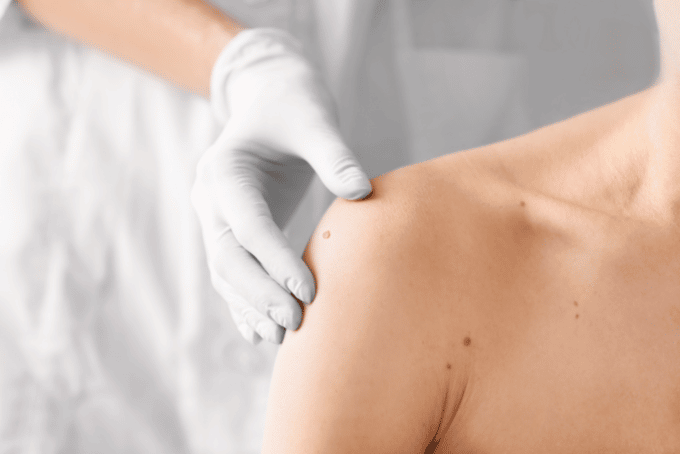Can A Dermatologist Treat Skin Cancer?

The incidences of skin cancer are rising, with an estimated 5.4 million squamous and basal cell carcinomas diagnosed each year. If you discover a spot on your skin, it is important to see your dermatologist right away. Most skin cancer is highly treatable, especially if caught early.
How Do Dermatologists Diagnose Skin Cancer?
A skin biopsy is the only way to determine if skin cancer is present in a patient. After an examination, the dermatologist will pinpoint any areas of concern. The dermatologist will numb the area and will remove a portion or all of the spot and some surrounding tissue.
The sample of skin is sent to a dermatopathologist. These medical professionals use high-powered microscopes to view the skin sample and look for cancerous cells. The most commonly found skin cancer is basal cell carcinoma.
The pathologist’s report is essential for treating skin cancer. This report will detail the type of cancer cells that were found so the dermatologist can begin treatment.
How Is Skin Cancer Treated?
Skin cancer is treated in multiple ways, depending on the type and severity. Sometimes, when skin cancer is found in its earliest stages, the initial removal for biopsy is all that is required to effectively get rid of the condition. Often, further treatment is necessary.
There are three types of surgical removal used by dermatologists to treat skin cancer. Your dermatologist will recommend the best form of surgery to ensure all the cancer cells are removed in their entirety.
Excision
During this surgical procedure, the area is numbed and the doctor removes the cancerous tissue, along with some surrounding healthy tissue. Removing the healthy tissue helps to ensure cancer will not grow back.
Mohs
Mohs surgery is preferred when the area being treated is important for a person’s appearance, such as around the eye or elsewhere on the face. This procedure takes a layer of skin off at a time and examines it. More skin tissue is removed until the microscope no longer shows cancerous cells. This procedure helps to ensure only the required cancerous tissues are removed safely.
Curettage & Electrodessication
During curettage and electrodessication, the skin cancer area is first scraped, to remove as much of the damaged skin as possible. Then, the dermatologist uses electrodesiccation to destroy any cancer cells that may remain in the area.
Patients may also be treated with photodynamic therapy, which makes their skin cells sensitive to light. Special lights are used to destroy the cancer cells without invasive surgical procedures.
Schedule a Consultation
Are you concerned about a mole, sore, or skin spot? If so, board-certified dermatologist Dr. David Baird is here to provide a thorough examination and biopsy services.
Our comprehensive skin cancer detection and treatment services encompass the care that is necessary for all types of skin cancer. We will be with you every step of the way and offer routine skin examinations to give you peace of mind. Call or fill out our online contact form today to schedule your consultation appointment with Dr. Baird. We are here when you need us most.

